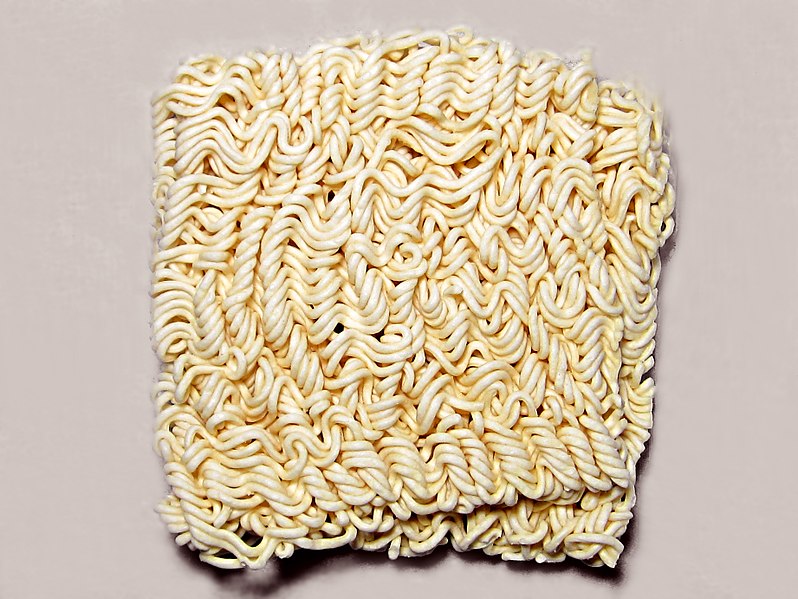Introduction
Common Ingredients in Instant ramen
water
oils
starches
egg
flour
preservatives
Method of Processing
Instant ramen noodles are usually cooked by steaming partially then are deep fried to dehydrate the noodles, then are packaged in cups or plastic packaging.
History of Instant Ramen 
Although noodles have been around for about 4000 years and originated in China, modern instant ramen was invented in Japan in 1958 by Momofuku Ando. According to Ando himself he created instant ramen as to help alleviate Japan’s postwar food shortages. These shortages were due to Japan’s loss of their empire so they could not sustain their population on domestic rice alone and had to look for cheap alternatives. Instant ramen was also popularized in Japan as a means of resisting full westernization during the American occupation since American officials were pushing Japan to turn to bread as a new staple food.
Cultural Significance
The creation of instant ramen in 1958 started a ramen craze in Japan that lasts to this day.
In 2010 it is estimated that 95 billion cups and packages of instant ramen were sold globally.
Instant Ramen has become a global food staple and common snack for people of all ages and backrounds.
Changed japanese preconceptions about processed food in the post war period since historically Japan placed a lot of emphasis on fresh and natural food.
https://pxhere.com/en/photo/857383 Kushner, Barak. 2012. Slurp! : A Social and Culinary History of Ramen, Japan’s Favorite Noodle Soup. Leiden: Global Oriental. http://search.ebscohost.com.ezproxy.kpu.ca:2080/login.aspx?direct=true&db=e000xna&AN=480800&site=ehost-live score=site Errington, Frederick, Gewertz, Deborah, and Fujikura, Tatsuro. The Noodle Narratives : The Global Rise of an Industrial Food into the Twenty-First Century. Berkerley: University of California Press, 2013. Accessed February 3, 2020. ProQuest Ebook Central. https://commons.wikimedia.org/wiki/File:Typical_instant_noodles_(1).jpg


Great point about ramen as a way to resist American occupation and the insistence on shifting Japan to bread!